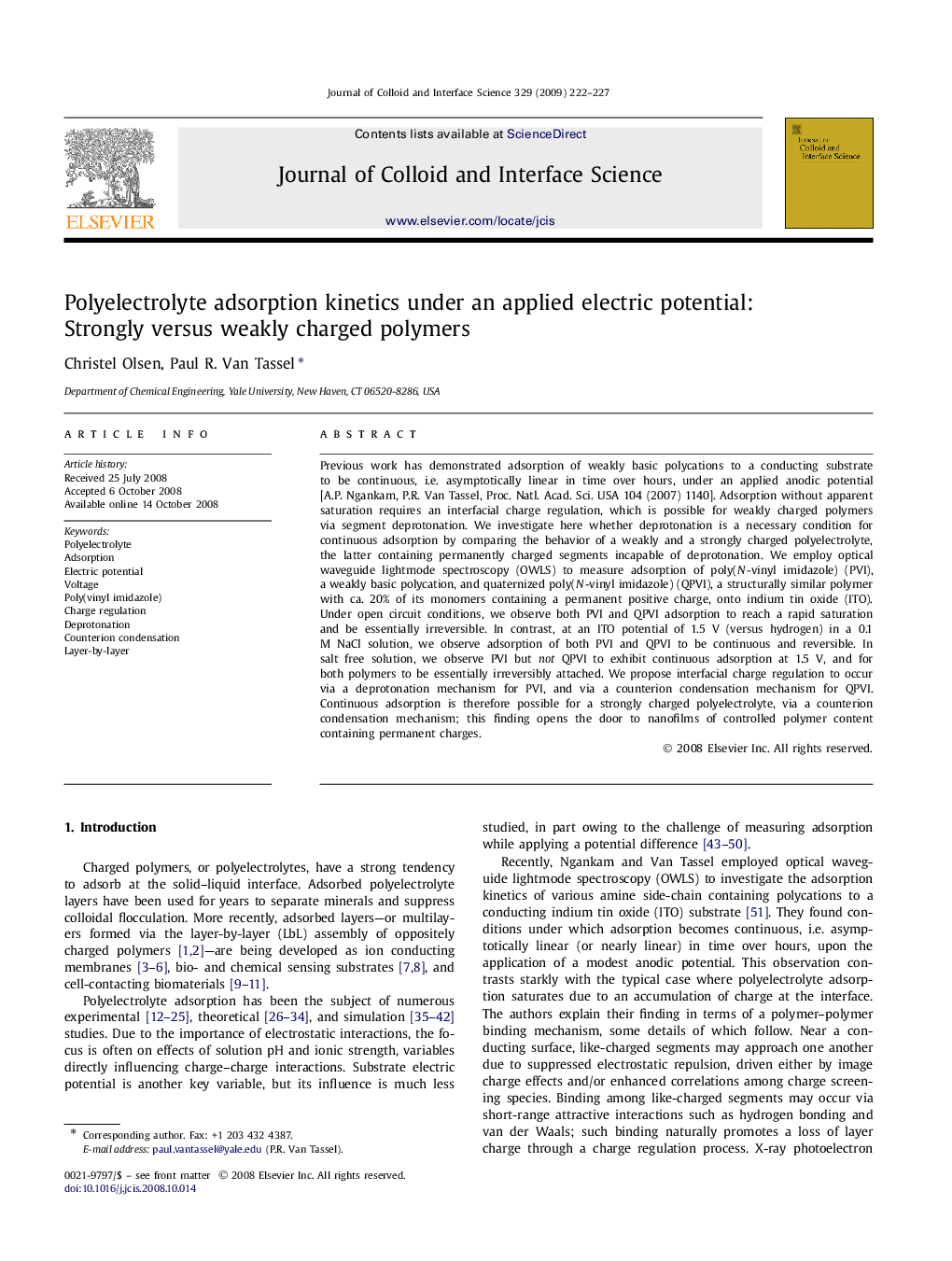| کد مقاله | کد نشریه | سال انتشار | مقاله انگلیسی | نسخه تمام متن |
|---|---|---|---|---|
| 610698 | 880656 | 2009 | 6 صفحه PDF | دانلود رایگان |

Previous work has demonstrated adsorption of weakly basic polycations to a conducting substrate to be continuous, i.e. asymptotically linear in time over hours, under an applied anodic potential [A.P. Ngankam, P.R. Van Tassel, Proc. Natl. Acad. Sci. USA 104 (2007) 1140]. Adsorption without apparent saturation requires an interfacial charge regulation, which is possible for weakly charged polymers via segment deprotonation. We investigate here whether deprotonation is a necessary condition for continuous adsorption by comparing the behavior of a weakly and a strongly charged polyelectrolyte, the latter containing permanently charged segments incapable of deprotonation. We employ optical waveguide lightmode spectroscopy (OWLS) to measure adsorption of poly(N-vinyl imidazole) (PVI), a weakly basic polycation, and quaternized poly(N-vinyl imidazole) (QPVI), a structurally similar polymer with ca. 20% of its monomers containing a permanent positive charge, onto indium tin oxide (ITO). Under open circuit conditions, we observe both PVI and QPVI adsorption to reach a rapid saturation and be essentially irreversible. In contrast, at an ITO potential of 1.5 V (versus hydrogen) in a 0.1 M NaCl solution, we observe adsorption of both PVI and QPVI to be continuous and reversible. In salt free solution, we observe PVI but not QPVI to exhibit continuous adsorption at 1.5 V, and for both polymers to be essentially irreversibly attached. We propose interfacial charge regulation to occur via a deprotonation mechanism for PVI, and via a counterion condensation mechanism for QPVI. Continuous adsorption is therefore possible for a strongly charged polyelectrolyte, via a counterion condensation mechanism; this finding opens the door to nanofilms of controlled polymer content containing permanent charges.
Both weakly (PVI) and strongly (QPVI) charged polymers exhibit adsorption without saturation under voltage in 0.1 M NaCl solution. Without salt, QPVI adsorption saturates, suggesting a counterion condensation mechanism.Figure optionsDownload as PowerPoint slide
Journal: Journal of Colloid and Interface Science - Volume 329, Issue 2, 15 January 2009, Pages 222–227